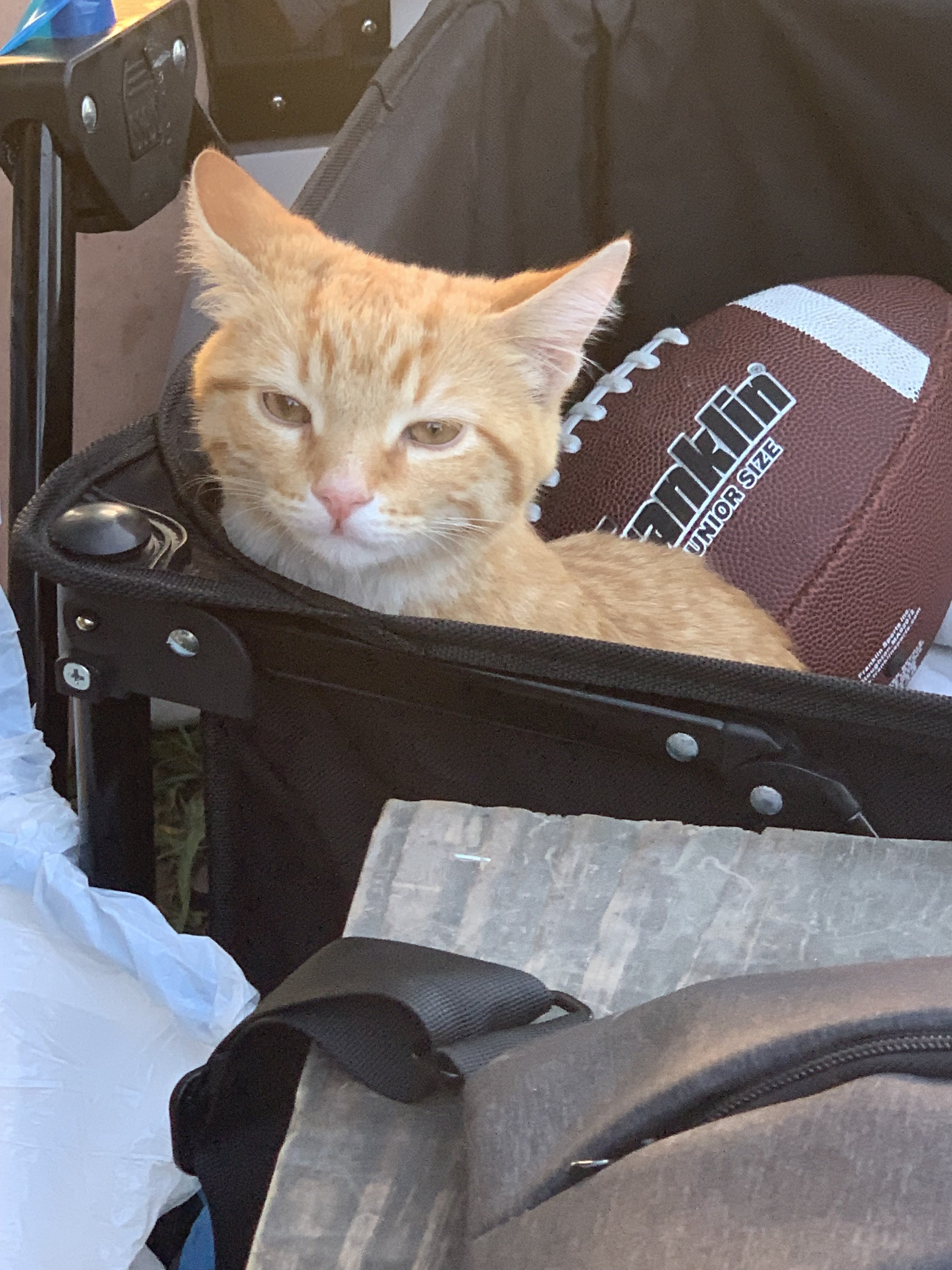This can be anything from Hyperspace in Star Wars, Warp Drive in Star Trek, travel through the Warp in Warhammer 40k or anything else.
I’ve always liked “slow” FTL travel, where going a few light-years still takes a few days or so. I also really like travel through an alternate dimension like in 40k, Event Horizon, Witchspace in Elite Dangerous.
I wanna know your favorite versions, or do you prefer stories that obey the laws of known physics, like the Expanse or Rimworld?
I love the idea that navigators in Dune ripped a line of space cocaine to forsee the best path through folded space for travelling.
Space cocaine is the best take on spice I’ve ever seen.
Challenge accepted

I read all of that in Peter Capaldi’s voice. You made my day
Infinite Improbably Drive in Douglas Adams’ Hitchhiker’s Guide to the Galaxy.
I find that highly unlikely.
Farnsworth: These are the dark matter engines I invented. They allow my starship to travel between galaxies in mere hours.
Cubert: That’s impossible. You can’t go faster than the speed of light.
Farnsworth: Of course not. That’s why scientists increased the speed of light in 2208.
Doesn’t Cubert later figure out that the engines don’t move the ship, instead they move the universe while the ship remains stationary?
I thought the Expanse did this really well. For starters, most travel is restricted as we currently know it. They have the Epstein drive, but something like that is feasible. In any case, humans are still meat bags that can only accelerate so much.
But then the FTL component requires some otherworldly technology with gating. That leaves the physics mystery to having been built by some smarter species and I think that is perfect for suspension of disbelief.
Definitely Warhammer 40k.
I was initially thinking Star Trek but I was also only thinking of how the FTL itself works; it’s based in actual theory which is cool.
But the “travel through hell and risk being haunted by ghosts and demons” thing in WH4k is dope af.
I was thinking of Event Horizon. That’s pretty much the same as you’ve described.
Fun fact: According to the writer, Event Horizon was written as being in the WH4k universe, at the earliest point man was known to cross into the warp. But without the actual licensing to call it Warhammer.
Cool! I have always loved them film. Never knew that fact. I haven’t done Warhammer since a kid but now you say it the gothic style ship interior does remind me of the chaos space marines.
So I really like the Stargates. They’re a lot more limited/less flexible in where you can travel, but with that limitation comes unique challenges and intriguing stories. The biggest pro about them? It’s the fastest form of FTL there is. You can travel literally instaneously to any other gate. And there are innumerable gates to travel to.
But there are a lot of cons too.
Convenience… gates must already be where you’d like to go. The gates are relatively small, unable to fit even a car through, and the gate has a time limit on holding it open so there is limited ability to send large quantitaties of goods through and absolutely no large objects.
Risk… connections are blind, so you don’t know what’s on the other side until you or a probe goes through and relay back details. And it’s a single point of entry, and only one way, so it’s easy to be trapped or ambushed on the other side without escape. The gate can also be damaged or have its dialing device missing, disabled or destroyed, making it functionally useless from that end. If your gate is dialed into, the only way to stop anyone from traveling through is with a barrier so close to the wormhole event horizon to make molecules unable to materialize. But even then, they can hold your gate open from their end for the time limit of the wormhole, and then immediately redial and prevent you from using it indefinitely.
Unknowns… Certain anomalies like black holes affecting the destination gate can also pose a cataclysmic danger to planet of the gate of origin. Random happenstance with solar flares can cause the wormhole to travel through time as well as space. Gates may be too far to travel without extra power, and there may not be power available on the other side to get back. Gates can be dialed at random or you may have a list of addresses, but without someone who’s been to these gates before, you have no idea who or what you’ll find on the other side until you dial it.
The typical use for the gates is cool, but the really interesting stuff is when things go wrong, or when people get really creative with the mechanics. Things going wrong like heading home to Earth but being gated unexpectedly to an icy cave with no exit and no dial device to be found and everyone having to figure out where you went even though none of it seems to make sense. And creative things like overcoming the gates’ distance limitations/extra power needs to cross between galaxies by daisy chaining hundreds of them in the void between the galaxies and setting up a macro to pass the matter buffer from one to the next without rematerializing the objects and people within in between.
Of course, traditional FTL ships exist in Stargate, but they are much slower than the instantaneous stargates, and have other dangers associated with them, like other armed ftl ships, pirates, replicators… Most ftl ships in stargate use hyperspace travel, but I believe that the Ancient’s inter-galactic stargate seeding ship, Destiny, uses a classic warp drive.
I like the system in Asimov’s Escape (from the I, Robot series). Spoilers ahead:
Two field engineers experience bizarre, dreamlike disorientation during the jump; afterward Susan Calvin explains the Brain discovered that hyperspace causes a momentary cessation of existence (i.e., you’re effectively disassembled and reassembled), which would panic a robot under the First Law—so the Brain (ship’s AI) masked it with funny/benign hallucinations and only reveals it after they return.
I’d imagine that a lot of future experiences led by true AI would be philosophically challenging like this.
Halo’s Slipspace has always been my favorite. It’s another dimension where instead of being able to move in four directions, things can move in eleven. This results in travel being faster there than in normal space.
The fun part is that the UNSC and the main antagonists- the Covenant- use the exact same method of FTL travel. The Covenant are just dramatically better at it, to the point of UNSC ships that attempt to run away from the Covenant via slipspace sometimes having the Covenant fleet they were fleeing already there and waiting on them.
Early UNSC Shaw-Fujikawa drives were a brute force punch into the other dimension, whereas Covenant adopting old Forerunner tech would slip into Slipspace more elegantly and with better accuracy. This allowed Covenant ships to slip within a single system, where UNSC ships might be within a few hundred thousand kilometers of their intended target and could not realistically attempt inter-system jumps, which I always thought was a cool detail.
Post Halo 3 when the Infinity gets Forerunner Slipspace drives and Forerunner Engineers to help adapt and implement the drives drastically improve Slipspace accuracy and speed was a huge turning point for humanity. Plus the ability to have small drop ship like crafts, Condors, have Slipspace capabilities was huge for ONI ops and smaller team excursions.
God I fucking love Halo lore.
My favourite thing about Halo FTL is how it handles causality, basically relying on the universe to act like a sponge and “soak it up” as it reconciles it across spacetime.
Send too much mass (aka the Halo array) and it massively slows down travel galaxy wide, as the spacetime is “sodden” and takes longer to reconcile it. Meanwhile in the days leading up to the firing of the Halo array slipspace travel suddenly became easier and quicker than had ever been experienced, as the Forerunner realise that after the firing of the array the amount of slipspace travel in the entire galaxy will be nil.
Stargate is pretty good. Rotary phone 😀. It’s an elegant way to minimize CGI costs for the show. Not only that, the concept that you don’t know what’s on the other side is also interesting.
Chevron 7 locked.
I was just watching that, it’s still one of my favorite shows.
They had hyperdrives too but they were pretty boring in comparison.
Admittedly the “don’t know what’s on the other side” bit is a little iffy. Sure, they’ve got that little wheeled robot they use a couple of times, but after a while you’d think they’d do something as simple as “stick a camera on a pole through the gate first.”
This is covered in the technobabble of the show. The gate is one way to anything bigger than radio waves, so the camera would see nothing until enough of it had dematerialized for the rest to be sucked through.
The camera wouldn’t emerge through the other side until the whole pole is through though, the Stargates only pass matter to the other end once the full object has entered.
My favourite is definitely BSG (
Big Sexy GiantBattlestar Galactica) where the big ships just go ‘poof’ in a flash of light and suddenly they’re somewhere else. Pure kino. :3The rescue where they jump the Galactica into the atmosphere of New Caprica, scramble Vipers, and then jump out again is maybe the coolest scene in TV sci-fi.
The setup is just perfect too. “All hands - brace for turbulence.”
And you’re thinking, No. No way he’s going to do that.
AND THEN HE DOES.
I also loved that, as soon as they did that, the Galactica started falling
I think it worked so well because they’d spent two or three seasons not doing that.
I just rewatched BSG a month ago or so, and yeah, that scene was so insanely cool!
I enjoyed reading Ursula Le Guin’s stories about instantaneous travel.
The process of instantaneous travel is so bizarre and unexplainable that every crew member experiences it differently. Some people think they haven’t gone anywhere, some people think they’re on the other side of the universe, and some people think the ship has disintegrated around them.
The only way for the process to succeed is for the entire crew to agree on a shared reality. It has the effect of making FTL travel a dangerous thing that requires training and planning. You can’t hop on a ship with random people and expect to survive. Everyone has to train together to really trust each other’s perception and experiences.
What story was this?
I think it’s called Shobie Story. It’s part of Fisherman on an Inland Sea.
Going plaid in Spaceballs is pretty dope.
Ludacris speed, go!
Ludicrous speed.
Ludacris is the rapper, but I like your enthusiasm. :)
Looking forward to round 2 (upcoming Spaceballs movie)
For practicality: Whatever it is that The Nox do in the Stargate TV show. It’s not well explained because, well, no other race is advanced enough to understand it. Something about briefly causing two distant points in space to touch. Instantaneous travel to anywhere.
For impracticality: #1 The ring network in one of Stephen Baxter’s novels. Kind of like the eponymous rings in the better known Stargate franchise, but the ring source and destination are fixed and transport time between rings is light speed, so you arrive years after you enter. And IIRC, you come out as an approximation of what you were when you went in. A very good approximation, but still an approximation. The advantage is that the journey seems instantaneous to the traveller.
#2 Whichever story has it that travel in hyperspace / subspace turns out to be slower than travel in real space. This may have been a throwaway Internet joke, but it still amuses me.
#3 Stephen King’s Jaunt.
So in the first Tolan episode, they contact the Nox so they can help the Tolan refugees. The Tolan mention their ftl, and Daniel says he thinks it’s like the folding space theory.
Basically like folding a sheet of paper, so the two ends meet, and shooting right through, so when it unfolds, you’re instantly on the other side, and the Tolan smiles and says “…No.”
I don’t recall the Nox ever mentioning FTL, just their invisibility, and they can also form wormholes without dialing.
I might have mixed some things up in the 20+ years since I saw that episode. For example, I could have also sworn it was Sam who made the wormhole comparison and was told “No.” I do remember it being awkward though, like the question was embarrassingly naïve.
You might like Larry Nivens Known Space books (such as Ringworld, among many others) as it’s hyperspace makes most people’s minds freak out. Very few people are capable of looking out a window in hyperspace and not going at least a little bit loopy.
It’s also implied that Things live in the gravity wells and that’s why you need to be far enough away before you make the jump but this isn’t really developed much.
I like gate type things and prefer them in space like babylon 5 and buck rogers.
I like the A Fire Upon The Deep version where Earth is in the “slow zone” but the speed limit gets faster in other regions of space. It makes enough sense that you could easily imagine a universe working that way, at least if you don’t know too much about physics.
















